Heirloom v modern: Meet the new apple varieties
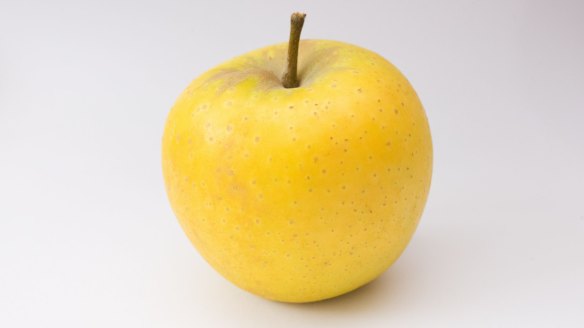
It is one of the most beautiful apples I've ever seen. Fat, round and heavy, it sits on the table like a golden orb. It has an enticing perfumed aroma, like old-fashioned roses and fresh grass. A single bite reveals an incredibly crisp interior with cream-coloured flesh and a flavour reminiscent of cooked apple and summer blossoms. This is the yello apple, also known as the shinano gold. It is grown in Australia but you can't eat it yet. It is one of several new apple varieties being trialled by Montague, one of the country's oldest and largest apple growers and distributors.
Yello is a Japanese apple developed in 1993, a cross between a golden delicious apple and an older Japanese variety called senshu. New varieties of apples are constantly being developed by breeders around the world to bring novelty and excitement to the apple industry. At the same time, old-fashioned varieties are being dumped and the trees pulled out to make way for apples with more flavour and more eye appeal.
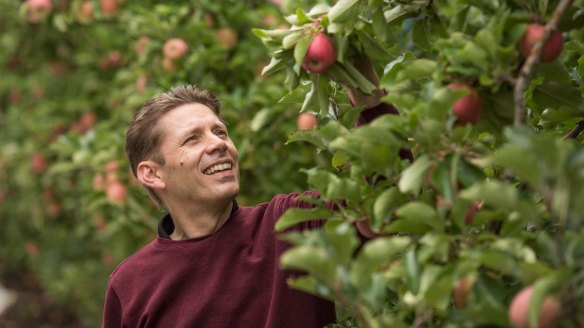
Many people grew up with gravenstein, jonathan and golden delicious apples, popular in the mid-20th century, but now they're been grown in diminishing numbers.
The Montague family planted their first apple trees in 1952 at their orchard at Narre Warren North, about 40 kilometres southeast of Melbourne. The popular varieties back then, including stewarts seedling, statesman, yates and Rome beauty, are almost unheard of now. The only varieties from those days the Montagues still grow are the popular tart, green granny smith and the deep ruby red delicious.
Rowan Little, general manager of Montague, puts a red delicious on the table. "This is an apple that goes back 128 years," he says. Perfect to look at, the skin is thick and chewy, the flesh tart and, after eating the yello, slightly sour.
We like to compare apples to cheese. With the right storage conditions the flavour of the apples improves.Rowan Little, Montague
Sweetness in apples is measured in brix – the amount of sugar per weight of total solution. Old-fashioned varieties are often around 11 brix while the new varieties come in at somewhere near 17.
We head outside into row after row of trees laden with bright red apples protected by a vast sea of white nylon netting.
"Apples are not meant to be eaten straight off the tree," says Little. "They have been bred to be stored."
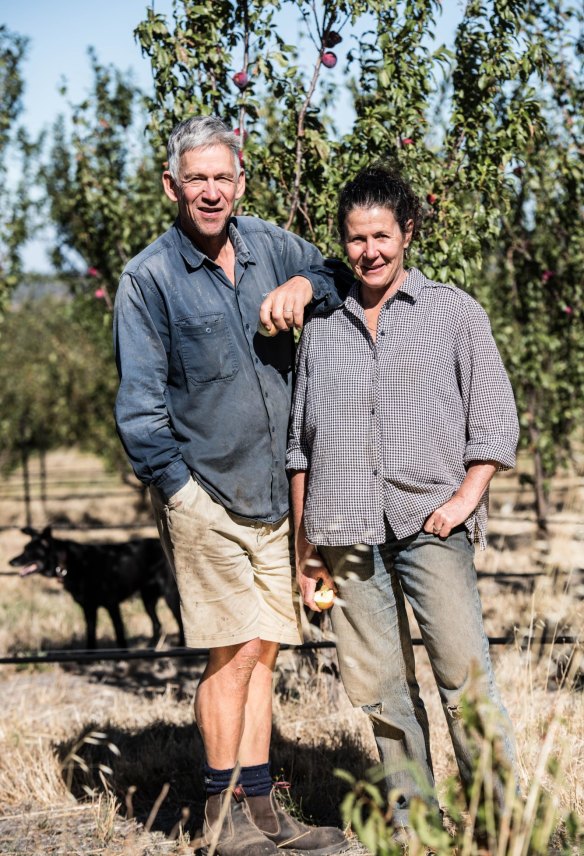
During storage the acidity drops and the starch in the flesh changes into sugar. Little says older varieties such as stewarts seedling, which originated in Ballarat in the 1870s, had thick skins and were stored in sand boxes in cellars for months on end in the colder months. These days, fruit is stored in controlled-atmosphere coolrooms with lower oxygen levels, which allows the fruit to ripen further while arresting breakdown of the flesh. "We like to compare apples to cheese," says Little. "With the right storage conditions the flavour of the apples improves."
While the Montagues are planting new varieties, some smaller growers are looking back to the past.
On an orchard that has been under apple trees since the gold rush, Hugh and Katie Finlay from Mount Alexander Fruit Garden at Harcourt in central Victoria are planting old varieties with names like geeveston fanny and peasgood's nonsuch, once common across the region but which haven't been grown for generations.
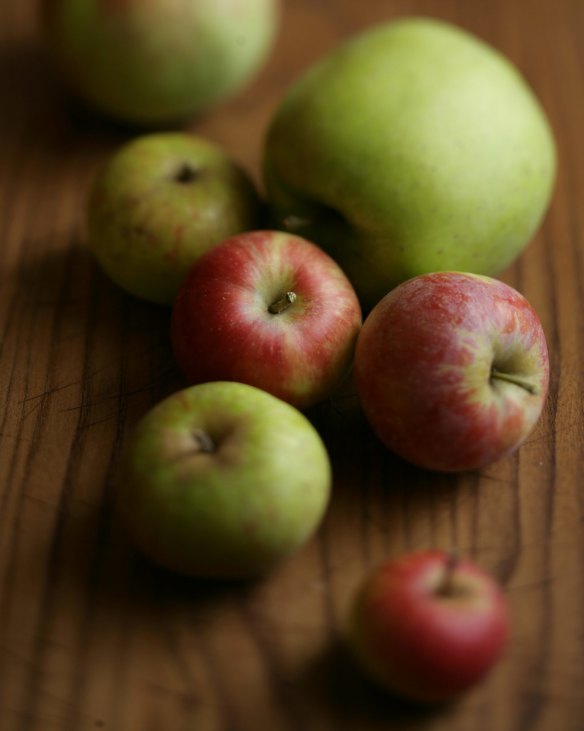
We walk through an orchard planted out with snow apples, a variety of French heritage with pink-red skin and snow-white flesh.
Bucking the industry trend to grow apples on dwarf rootstock – little trees planted close together – the Finlays are instead grafting their old-fashioned fruit onto rootstock they have grown from seed.
"Rootstock planted from seed produces a larger tree," says Katie. "A larger tree with deeper roots," adds Hugh. Fruit trees grown on apple seed stock send their roots deep down into the subsoil in search of water. Although their orchard is irrigated, they want to be more self-reliant, "because with this changing climate it is not getting any wetter," says Hugh.
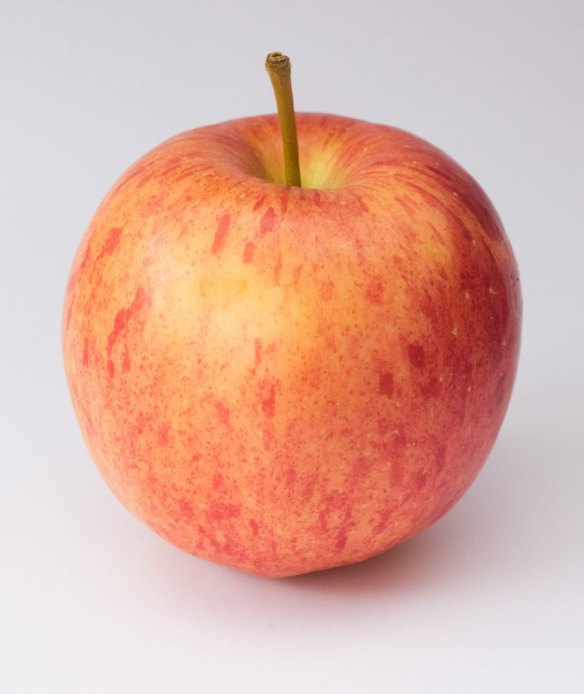
The trees grow tall and are difficult to harvest but also cast shade on the ground, creating a microclimate. Because the roots are deep in the soil, they draw on different minerals. Some say this gives the apples a different flavour – a sense of terroir.
The Finlays are an important part of the apple industry, preserving heritage varieties like cox's orange pippin, which breeders draw on for new varieties such as yello.
And while the Finlays are small enough to sell their harvest through their farm gate and farmers' markets, Montague is a global business selling most of its fruit through supermarkets. This poses challenges of its own. "People will tell you that they buy their apples based on flavour," says Little. "But we know through research that 90 per cent of customers buy on colour, and that colour is red.
It's a problem for plant breeders because red apples are not always the most flavoursome, and bringing in more flavoursome genetics by crossbreeding with yellow-skinned varieties can create its own problems. "People think that yellow skin means the fruit is going to be soft inside," says Little. "Apart from royal gala, that is simply not true."
Little gives a perfectly ripe apple a little flick with this fingernail. It gives a tight, high-pitched pinging sound. If an apple is soft inside, it gives a dull hollow thunk, he says.
He also gives away a little industry insider information. There are different tiers of apples, some tastier than others. The value apples such as pink lady and royal gala are sold for about half the cost of better-tasting apples such as smitten and jazz. Premium apple trees often yield less fruit with the same inputs of water and fertiliser, making them more expensive.
Little offers a taste of the jazz apple. It is perfumed, like lilacs or hyacinths, with crisp, tangy and sweet flesh. "When an apple reaches the market it is ready to eat," he says. "So it shouldn't be stored in the fruit bowl where it will quickly over-ripen, especially if it is near bananas. Keep your apples in the crisper."
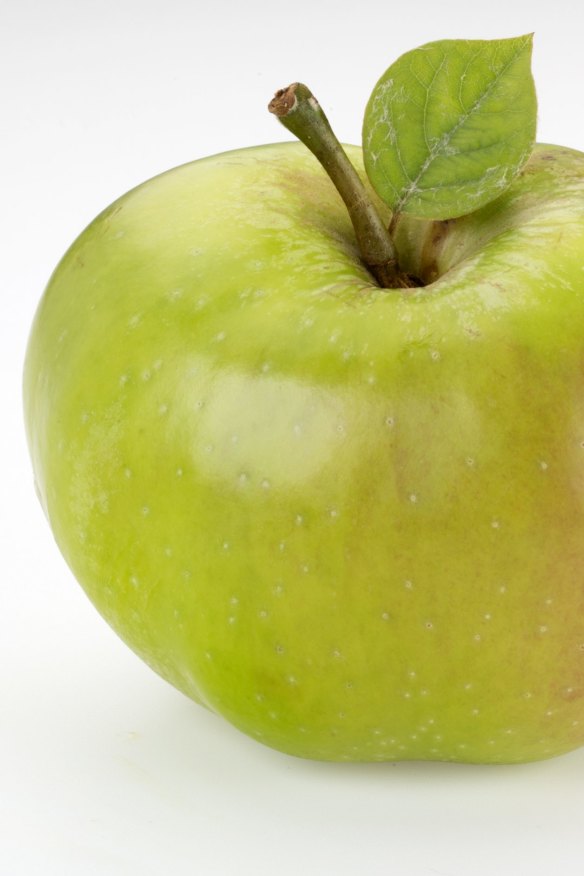
The old and the new
There are almost 50 new apple varieties being grown and sold in Australia and about a dozen undergoing commercial trials. Some of the new varieties are "sports" – spontaneous natural mutations that occur in the orchard. Some are controlled crosses in which the flowers of one variety are deliberately pollinated with pollen from another variety. Many crosses involve varieties that are more than 100 years old.
The old
Bramley
This is the quintessential English cooking apple (pictured above), with a clean tart taste that develops into more complex "cooked apple" flavour on the stove or in the oven. Originally from Nottinghamshire, it is perfect for tarts and pies, apple sauce with pork or when you want deep apple flavour and a clean finish.
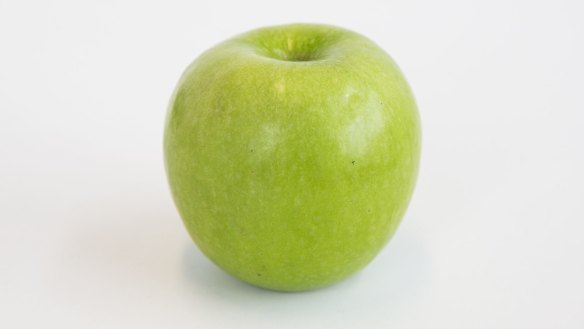
Granny smith
In the late 1800s apples were either eating apples or cooking apples. A random seedling that popped up in Maria Ann Smith's backyard in Epping, NSW, grew into a tree that produced green acidic fruit well suited to pies and stewing. The fruit matured off the tree into a more mellow yet tangy eating apple. One hundred and 50 years later, this tart, crisp apple is still one of our favourites.
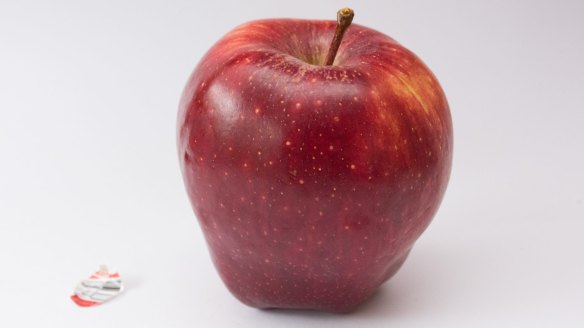
Red delicious
The stalwart of the apple industry, this eating apple was first grown on an orchard in Iowa in 1880 and has remained popular due to its perfect proportions and deep red colour. However, it is being supplanted by newer, tastier and sweeter varieties.
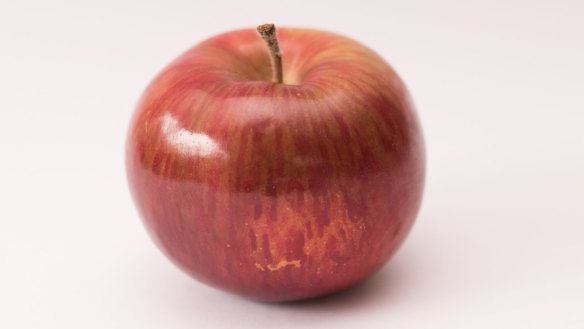
Snow
Appearing in France in the 1600s, this smallish bright red apple has pure white flesh that is wonderfully aromatic. The tree has the ability to withstand very cold conditions in winter. Although it has relatively low sugar (11.4 Brix), it tastes quite sweet due to the low acid. A perfect little apple for a school lunchbox. Look out for it at farmers' markets.
The new
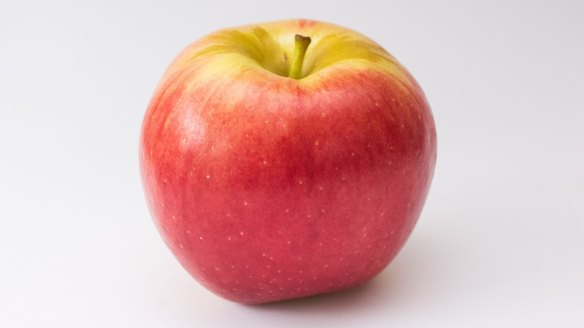
Ambrosia
Originally from British Columbia, this is a glossy pale red with a yellow collar and cream-coloured flesh. It is wonderfully perfumed with aromas reminiscent of honey and grape juice. Eat as a snack or julienne, sprinkle with lemon juice and add to a salad. Harvested in small numbers this year, look out for it next year when it hits the shelves in late March.
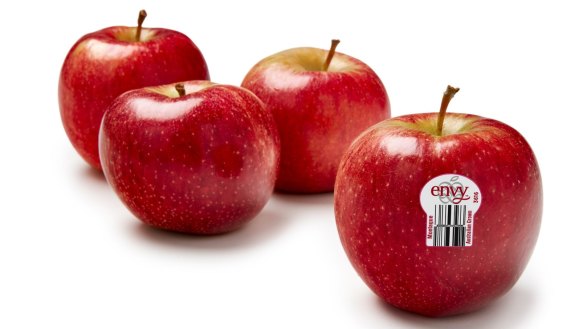
Envy
Now the most popular apple in Asia, this is the sister apple to the jazz, it also being a cross between the braeburn and royal gala. A larger squat apple with a yellow blush, it has cream-coloured flesh with a bright acidic note, lovely sweetness, a smooth texture and aromas reminiscent of blossom and almonds. It is less prone to browning when cut so is perfect for salads and cheese platters as well as an eating apple.
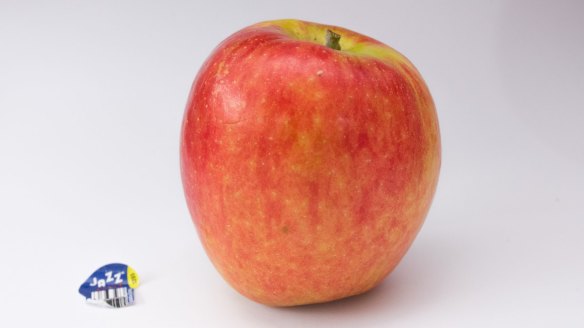
Jazz
Grown across the nation from Manjimup, WA, to Stanthorpe in Queensland, this is one of the tastiest apples on the market. With red skin on a yellow background, it is a cross between a royal gala and braeburn, it has lovely floral aroma with hints of pear. A great eating apple. Available April-October.

Yello
Presently undergoing market testing, the yello is a Japanese cross between a golden delicious and a senshu apple. It is a superb eating apple, offering flavours reminiscent of sweet apple pie when ripe. It is due to be released to the Australian market in March 2019.
Apple, date, almond and mint salad with sweet vanilla lime dressing
Super crunchy and juicy, Jazz apples are perfect for this sweet salad, says Ashley Alexander, of food blog Gather & Feast. She likes to slice them into rounds so you can see the star shape the core creates. Serve the salad for breakfast with granola, porridge and natural yoghurt or as a dessert with yoghurt, fresh cream or ice-cream.
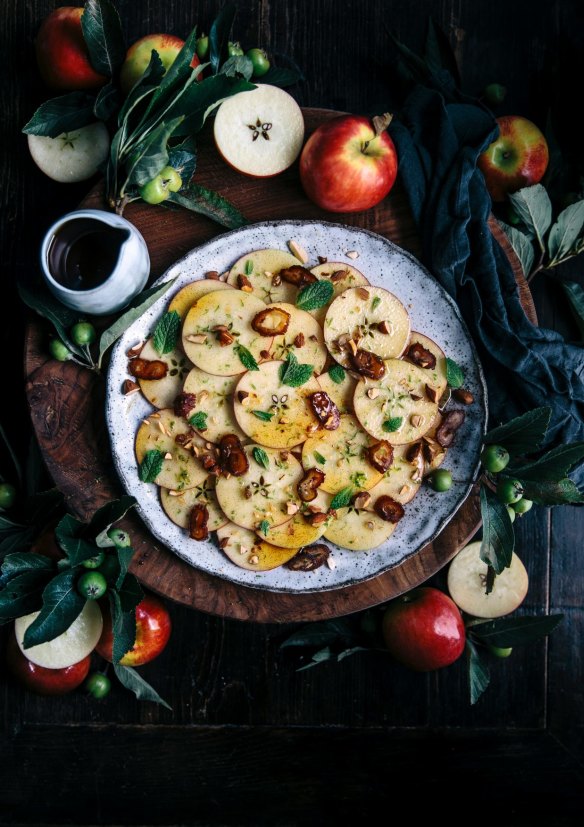
Salad
6 apples
4-5 large Medjool dates
¼ cup roasted almonds, roughly chopped
1 fresh lime, zest & juice
fresh mint leaves for garnish
Dressing
¼ cup pure maple
1 tbs vanilla paste
tiny pinch of flaked sea salt
METHOD
1. Place the dressing ingredients into a small jar, along with half of the lime juice and shake to combine then set aside.
2. Slice the apples into rounds 5mm thick.
3. Arrange them on a plate or tray and squeeze the remaining lime juice over the slices to stop them from browning. Pour half of the dressing over the apples and set aside.
4. Remove the seeds from the dates and slice finely. (If you freeze them first they are easier to slice and deliciously chewy when frozen.)
5. Place the dressed apples onto a serving plate and top with the sliced dates, chopped almonds, lime zest, and a few fresh mint leaves.
6. Drizzle with the remaining dressing and serve.
Serves 4-6
Katie's apple cake
Katie Finlay from Mount Alexander Fruit Garden in Harcourt says if you can't find bramley apples for this cake, use granny smiths.
INGREDIENTS
4 bramley apples, peeled and cored, cut into quarters, then each quarter into 4-6 chunky pieces, depending on size of apple
¾ cup vegetable oil
1½ cups sugar
3 eggs
2 cups self-raising flour
2 tsp cinnamon
1 tsp nutmeg
Topping
1 tbsp castor sugar
½ tsp cinnamon
1 tbsp butter
METHOD
1. Preheat oven to 200C. Grease and flour two 20 centimetre x 10 centimetre loaf tins.
2. In a large bowl, cream oil and sugar until sugar dissolves, then add the eggs one at a time and beat well.
3. Sift together the flour, cinnamon and nutmeg and add to the sugar and egg mixture. Then add the apple pieces and fold in. The mixture should end up very stiff, to the point that it's difficult to fold the apple pieces in.
4. Put half the mixture in each tin, ensuring all the apple pieces are covered in batter. Bake for 40-45 minutes, or until a skewer inserted into the middle of the cake comes out clean (though be careful the skewer goes into batter, not a chunk of apple). Remove from the oven.
5. For the topping, combine the castor sugar and cinnamon in a small bowl and melt the butter. While the cake is still warm, use a pastry brush to brush the butter over the surface of each cake, and sprinkle thickly with the sugar and cinnamon mixture.
Serves 20
